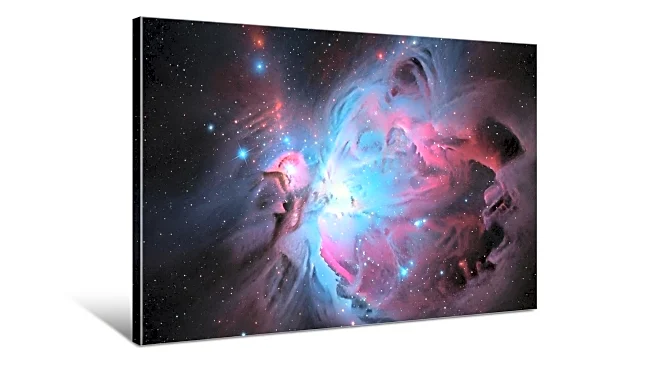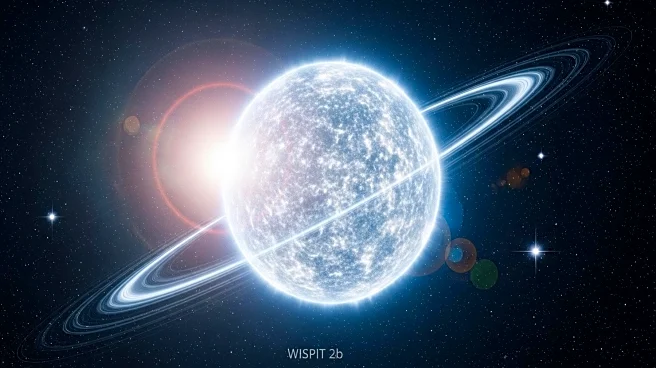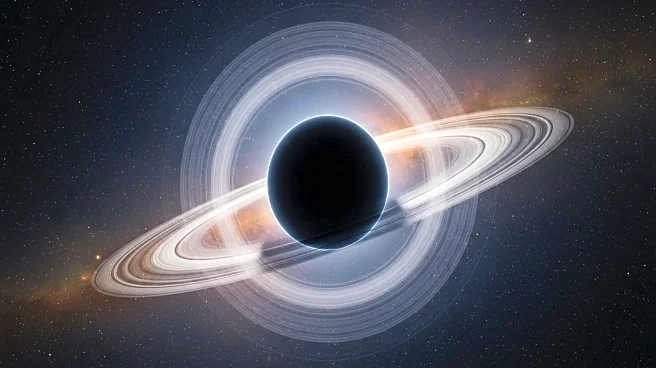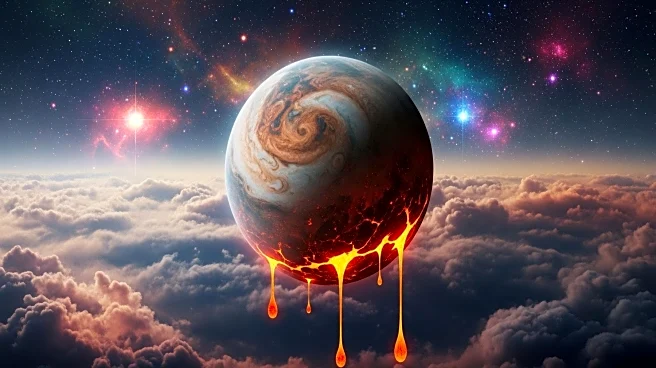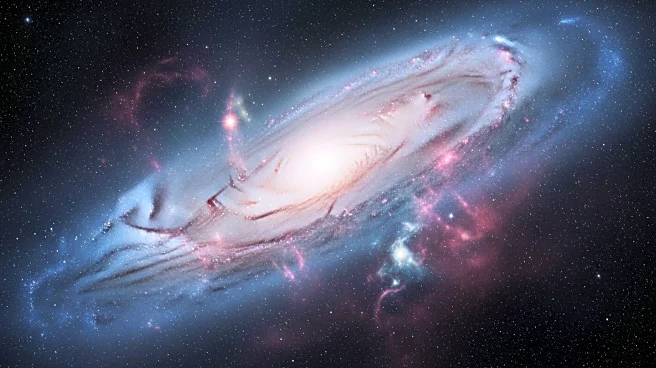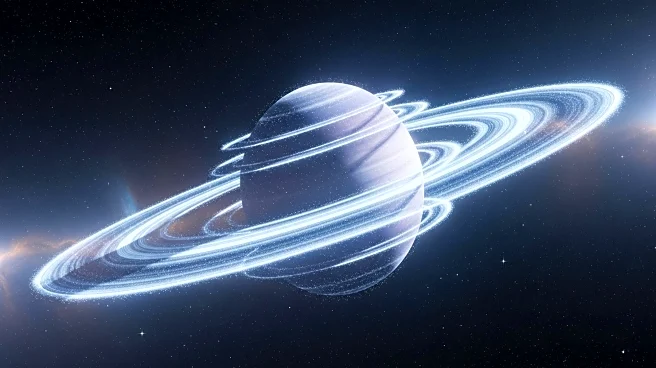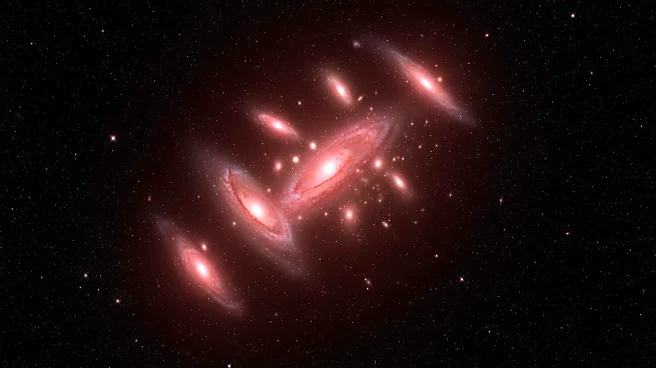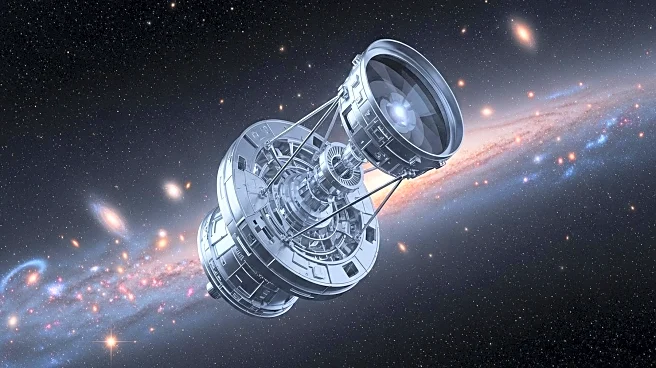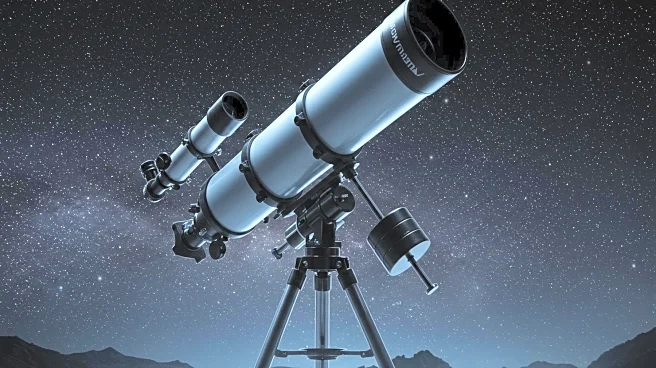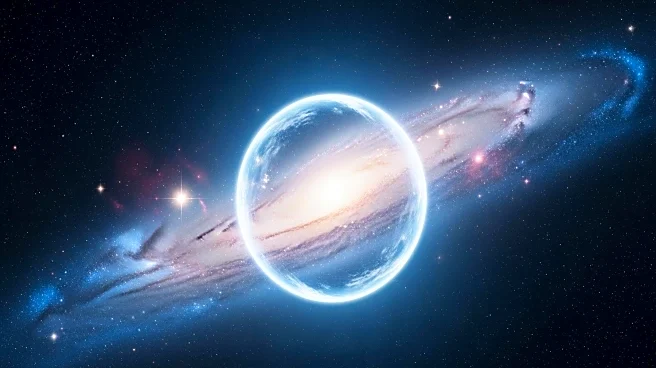What is the story about?
What's Happening?
Recent studies have challenged the long-held belief that the first stars in the universe were uniformly massive. Traditionally, these stars were thought to be composed of pure hydrogen and helium, with masses hundreds to thousands of times that of the Sun. However, new research suggests that collapsing gas clouds in the early universe may have also formed lower-mass stars. One study utilized astrophysical computer simulations to model turbulence within these clouds, leading to fragmentation into smaller star-forming clumps. Another study conducted a laboratory experiment demonstrating the early formation of molecular hydrogen, essential for star formation. These findings imply that the second generation of stars, possibly hosts of the first planets, may have formed earlier than previously thought.
Why It's Important?
The discovery of lower-mass stars in the early universe has significant implications for our understanding of cosmic evolution. It suggests that the chemical processes active in the first 50 to 100 million years after the Big Bang were more complex than previously believed. This could alter theories about the formation of stars and planets, impacting our understanding of the universe's history. The presence of lower-mass stars could mean that the conditions necessary for planet formation existed earlier, potentially leading to a reevaluation of the timeline for the development of habitable worlds.
AI Generated Content
Do you find this article useful?
